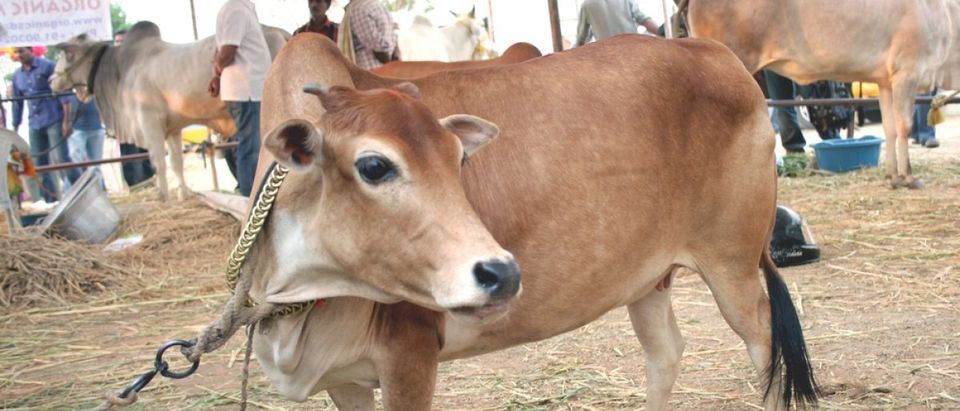Indian scientists think they’ve found a way to cut emissions from the global dairy industry: they want milk producers to start using a dwarf cow that can withstand heat waves and release way less methane in their flatulence.
Scientists believe the Vechur “dwarf” cow could hold the key to “greening” the dairy industry, which is blamed for a sizable amount of global methane emissions. Scientists looking at how Vechurs can withstand intense heat waves inadvertently found these cows also emit one-tenth of the methane of a normal-sized cow.
India is also using the new research to skirt “blame” for global warming. Scientists argue that while India has the most cattle of an country on Earth — about 300 million cows — the low-methane output of their animals means they aren’t as responsible as other countries for warming the planet.
“By breeding our indigenous cows, we can reduce the amount of methane released into the atmosphere,” Elayadeth Muhammed, a animal scientist at Kerala Veterinary and Animal Sciences University, told the Telegraph.
“India has the most cattle of any country in the world. But since our animals are producing less methane, we can now show that they should not be blamed for climate change,” Muhammed said.
Methane is a potent greenhouse gas, which scientists say contributes to global warming. Methane is about 20 times as potent as carbon dioxide, the most common greenhouse gas, but persists in the atmosphere for a shorter amount of time.
There’s just one problem: Vechurs don’t produce nearly as much milk as, say, American cows. That means it would be extremely difficult to produce the same amount of milk for mass consumption — that problem in and of itself could force more resources to be spent increasing milk production, thereby eliminating any supposed environmental benefit.
“There’s an arguments for the benefits of a smaller cow in some countries, although this is the extreme end of the scale,” Chris Reynolds, a professor at the University of Reading, told the Telegraph. “It all down to maintenance cost, which is much less.”
“The only problem is you’d need a lot more of those small cows,” he said.
But India is only following the lead of the U.S. and Europe in trying to find ways to cut emissions from the dairy industry.
The Obama administration released a methane plan in 2014 that called for reducing emissions from the dairy industry 25 percent. That meant finding ways to capture or reduce emissions from cow farts and burps.
Republican lawmakers, however, were quick to criticize the White House’s proposal, arguing the government could end up taxing cow farts. Lawmakers wrote a letter to the heads of federal agencies, urging them not to impose any sort of tax on methane from cows.
“In 2008, as part of its Advanced Notice of Proposed Rulemaking to regulate GHGs under the Clean Air Act, the EPA deliberated regulating agriculture-related emissions, which would have required farmers to purchase expensive permits,” Republicans wrote to the Obama administration.
“It was estimated that these top-down regulations would have cost medium-sized dairy farms with 75 to 125 cows between $13,000 and $22,000 a year, and medium-sized cattle farms with 200 to 300 cows between $17,000 and $27,000,” Republicans added. “We reject the notion that the EPA should, absent express authorization from Congress, seek to regulate the agriculture sector in this manner.”
Follow Michael on Facebook and Twitter
All content created by the Daily Caller News Foundation, an independent and nonpartisan newswire service, is available without charge to any legitimate news publisher that can provide a large audience. All republished articles must include our logo, our reporter’s byline and their DCNF affiliation. For any questions about our guidelines or partnering with us, please contact licensing@dailycallernewsfoundation.org.












